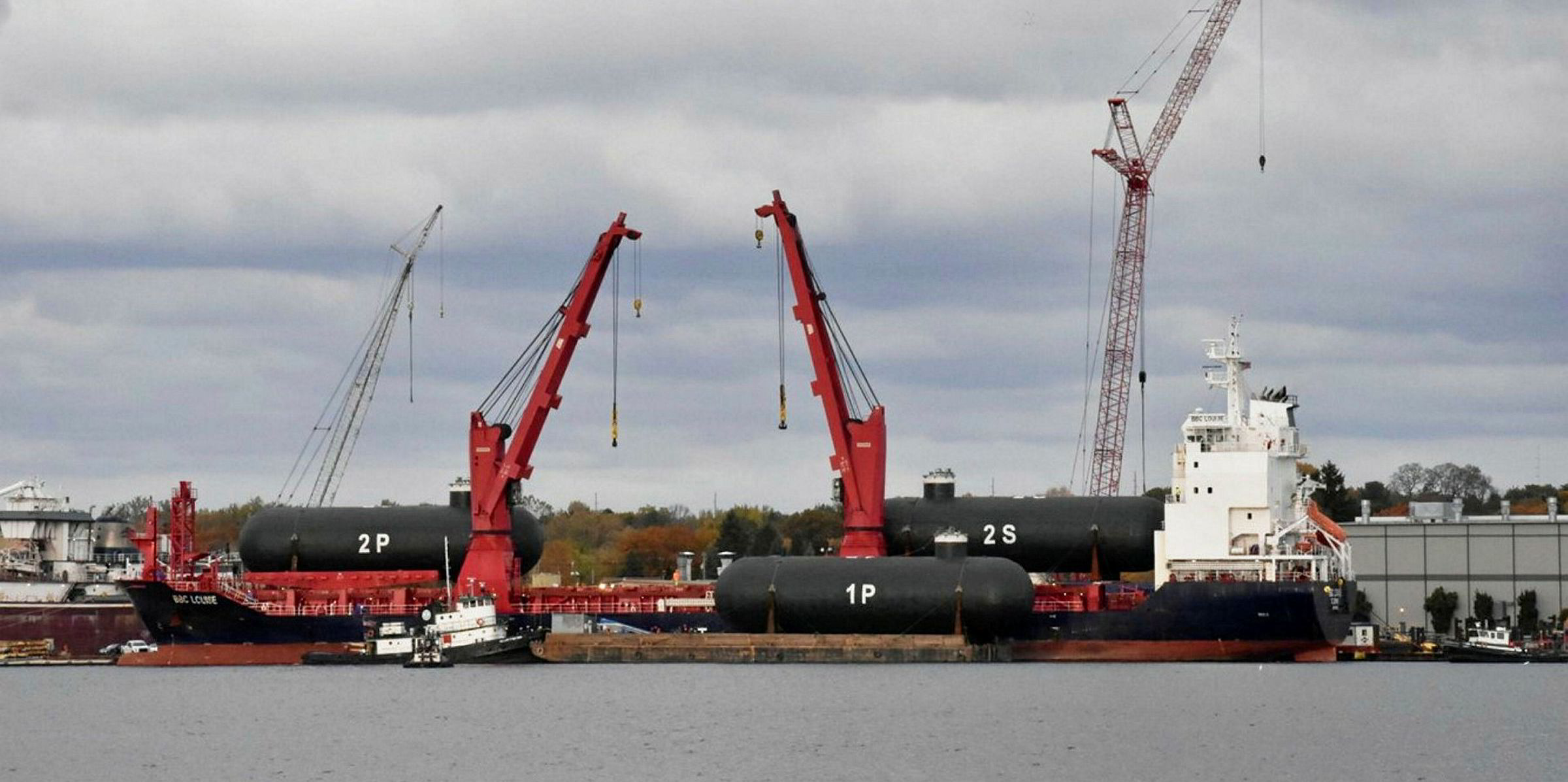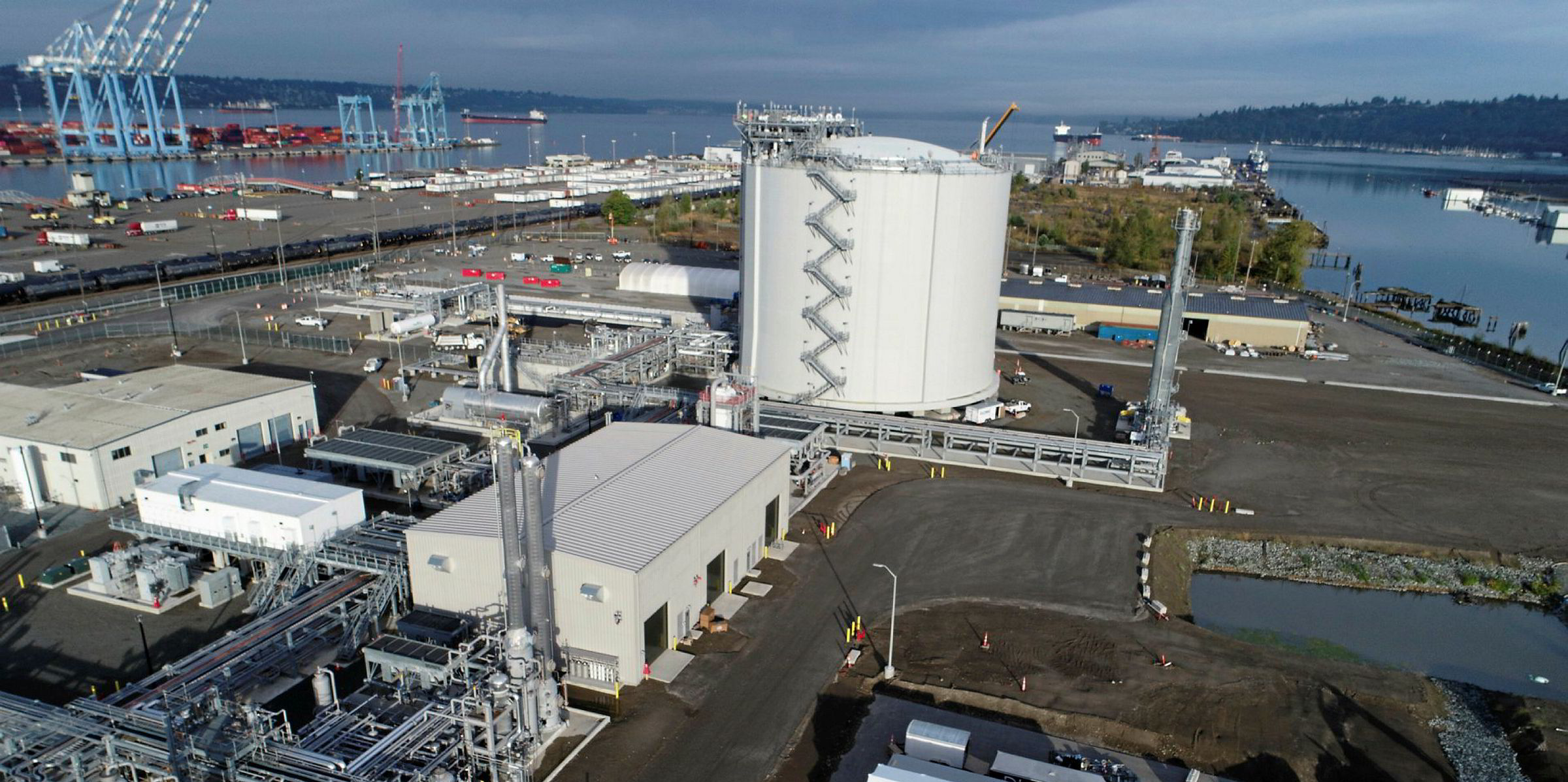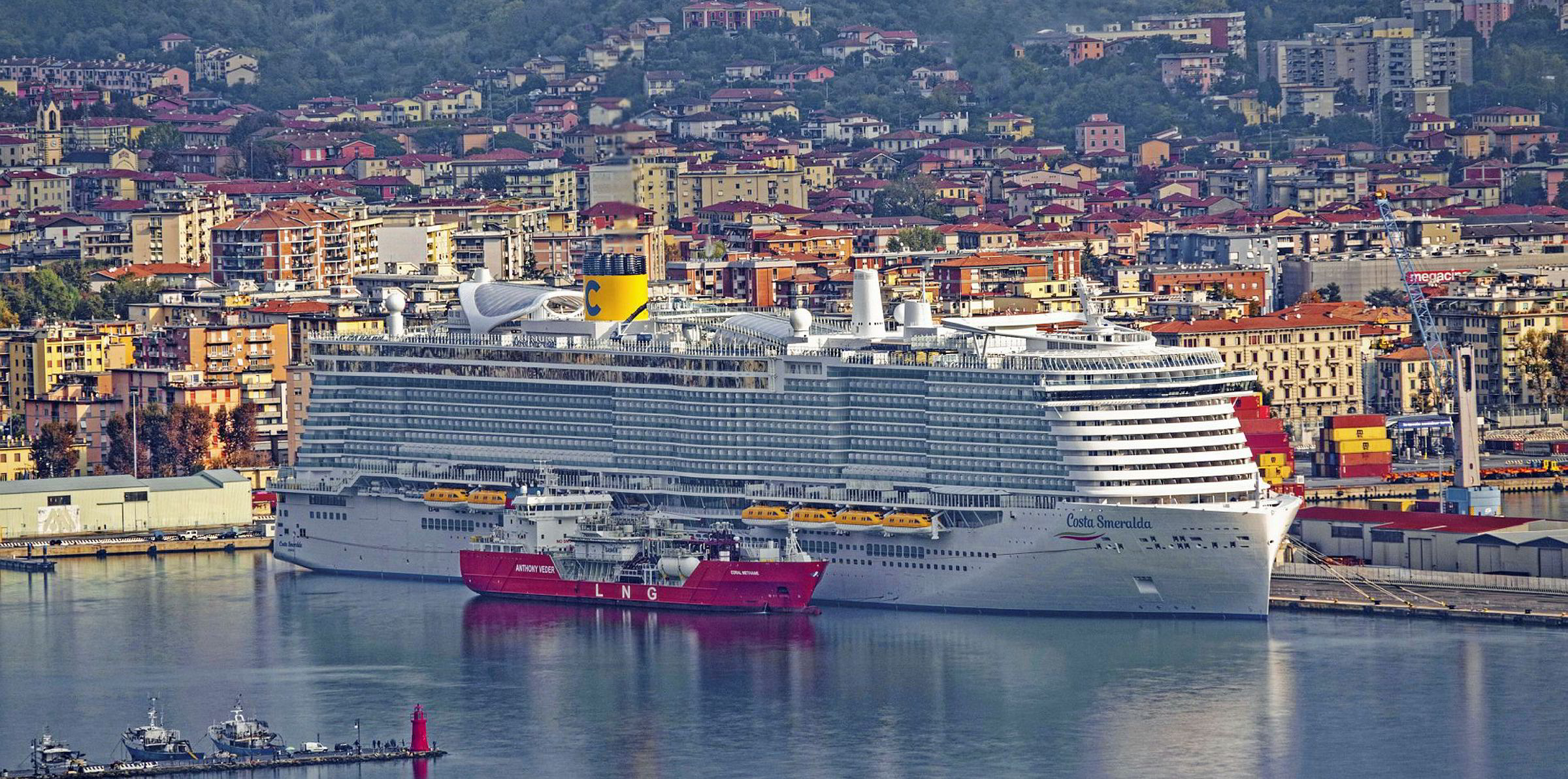US LNG bunkering company NorthStar Midstream and transportation arm Polaris New Energy are looking at a building a second LNG bunker barge.
NorthStar senior vice president for LNG Tim Casey told TradeWinds the company is “working with several customers” to support the construction of a sister articulated tug barge (ATB) unit to the 5,400-cbm vessel it is currently building, or a similar 7,500-cbm ATB.
Casey told IQPC’s LNGBunkeringLive meeting that Polaris’ 5,400-cbm ATB newbuilding Clean Canaveral is scheduled for delivery in the fourth quarter of next year.
The unit’s four 1,350-cbm type-C LNG cargo tanks have arrived at Fincantieri Bay Shipbuilding in Wisconsin and its tug will be completed in June.
Cruise customers
The Jones Act unit, which will be the largest LNG bunker barge operating in US waters, will be used to supply LNG and marine bunkers from Port of Jacksonville-based producer Jax LNG to the cruise industry in south Florida and to ports on the US Atlantic coast, Casey said.
Jax LNG, which was formed in 2014, is a partnership between Dominion Energy subsidiary Pivotal LNG and Oaktree Capital-backed NorthStar Midstream and its associate Polaris New Energy.

Speaking at the virtual event on Tuesday, Dominion Energy vice president for gas development services Roger Williams said Jax LNG could triple its supply capacity with a third expansion phase as demand for marine bunkering increases in the US.
“As LNG demand from the transportation market continues to grow we are going to grow with it,” Williams said.
Jax LNG started marine bunkering operations in 2018 and is supplying over 120,000-gallons per day of LNG using Tote’s LNG barge, the 2,200-cbm Clean Jacksonville (built 2018). This barge has completed more than 100 LNG bunkering operations, servicing one or two vessels a week.
Expansion
A second phase expansion is under construction that will triple Jax LNG’s liquefaction capacity to 360,000-gallons per day and double on-site storage to 4m gallons of storage.
This will be in service at the end of next year.
Williams said the facility can be expanded to 600,000 gallons per day in a third expansion phase to meet the growing LNG markets in Jacksonville and the rest of the south-eastern US.
He highlighted that Jax LNG is strategically located to the port’s container terminal and car offloading facility.
Casey said: “The operations we have set up are repeatable and can be duplicated in multiple ports around North America.”
“The supply in the last mile delivery components will be different in every area but we believe we can solve those logistics challenges.”
“We are in a very exciting time as demand for LNG as bunker fuel grows throughout the world,” he added.






